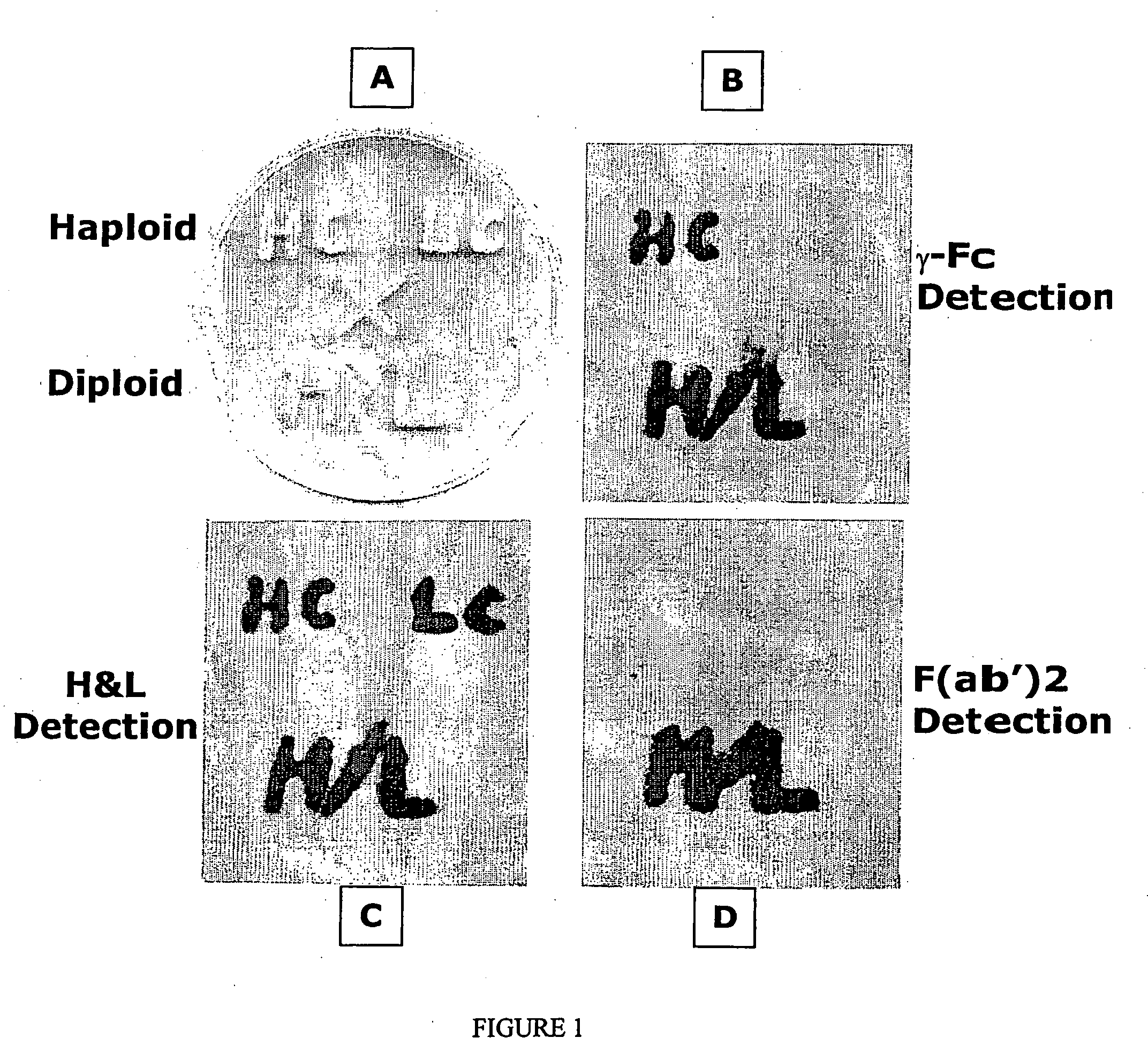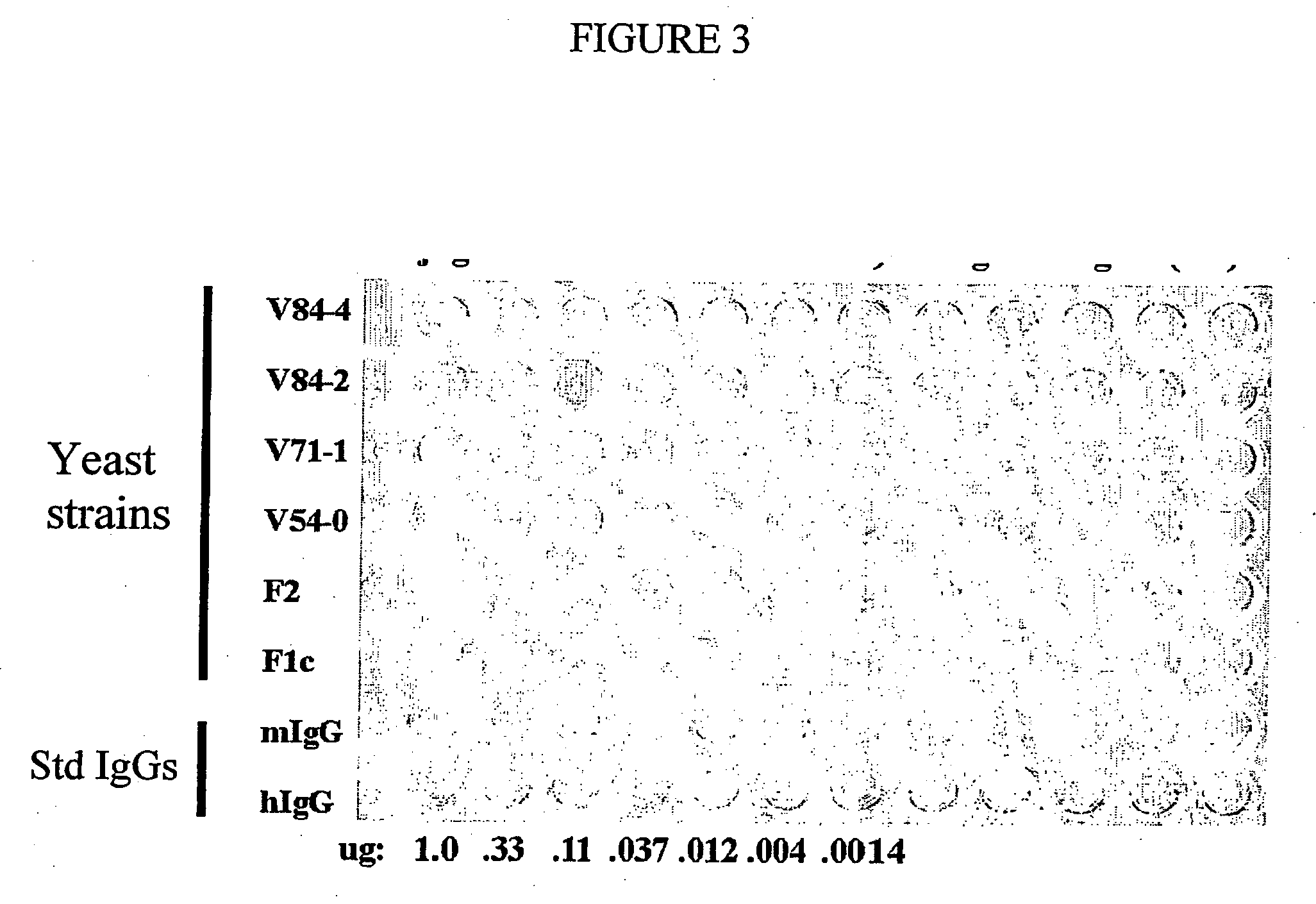Methods of synthesizing heteromultimeric polypeptides in yeast using a haploid mating strategy
a technology of heteromultimeric polypeptides and haploid mating, which is applied in the direction of peptides, immunoglobulins, immunoglobulins against animals/humans, etc., can solve the problems of insufficient efficiency in the production of active biomolecules, many host cells do not possess the appropriate enzymes, and the expression of multimeric proteins in active form is difficult to achieve in some recombinant expression systems. achieve the effect of enhancing full-length product generation
- Summary
- Abstract
- Description
- Claims
- Application Information
AI Technical Summary
Benefits of technology
Problems solved by technology
Method used
Image
Examples
example 1
[0093] To demonstrate the efficacy of the diploid antibody production method the following reagents were prepared.
[0094] Antibody genes: Genes were cloned and constructed that directed the synthesis of three forms of a chimeric humanized mouse monoclonal antibody OKT3. The sources of the variable regions for use in these constructs can be found in Genbank. Accession number A22261; mouse OKT3 heavy chain (International Patent Application WO 9109967-A 3 11 Jul. 1991). Accession number A22259; mouse OKT3 light chain (International Patent Application WO 9109967-A 3 11 Jul. 1991).
[0095] All three forms utilized the identical VκCκ light chain gene (SEQ ID NO: 10). For the three heavy chain genes, all encoded the identical mouse variable region (Vh) but differed from each other in the amino acid sequence of the human heavy chain constant regions. The first construct directed the synthesis of a full-length wild-type heavy chain (Cγ0) with its single normal N-linked glycosylation site pres...
PUM
| Property | Measurement | Unit |
|---|---|---|
| cell density | aaaaa | aaaaa |
| temperatures | aaaaa | aaaaa |
| temperatures | aaaaa | aaaaa |
Abstract
Description
Claims
Application Information
 Login to View More
Login to View More - R&D
- Intellectual Property
- Life Sciences
- Materials
- Tech Scout
- Unparalleled Data Quality
- Higher Quality Content
- 60% Fewer Hallucinations
Browse by: Latest US Patents, China's latest patents, Technical Efficacy Thesaurus, Application Domain, Technology Topic, Popular Technical Reports.
© 2025 PatSnap. All rights reserved.Legal|Privacy policy|Modern Slavery Act Transparency Statement|Sitemap|About US| Contact US: help@patsnap.com



